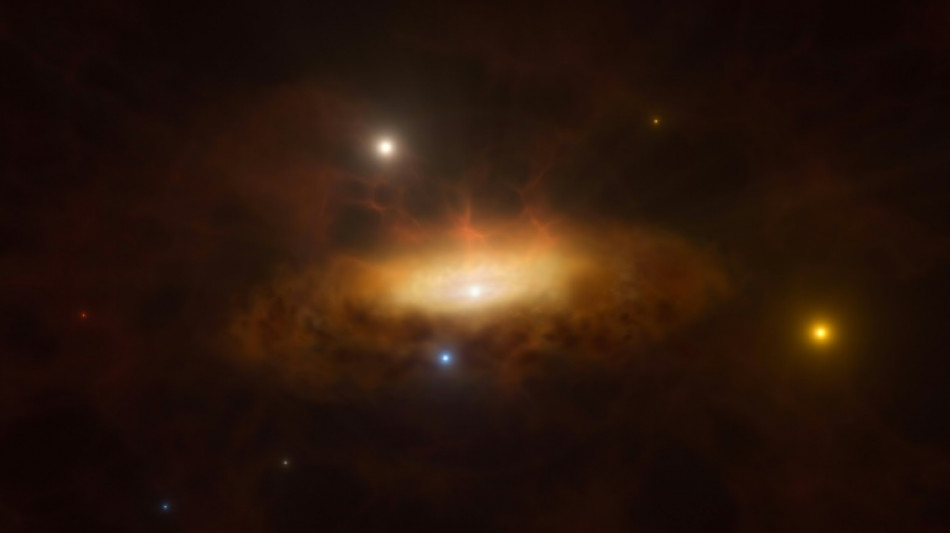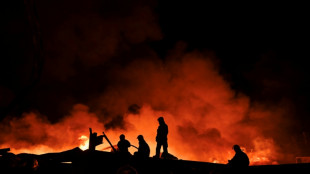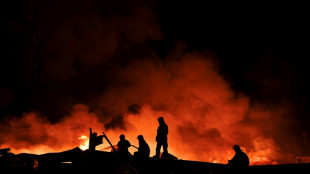
-
 Japa's Miura and Kihara capture Skate America pairs gold
Japa's Miura and Kihara capture Skate America pairs gold
-
Who can qualify for 2026 World Cup in final round of European qualifiers

-
 UK to cut protections for refugees under asylum 'overhaul'
UK to cut protections for refugees under asylum 'overhaul'
-
England's Tuchel plays down records before final World Cup qualifier

-
 Depoortere double helps France hold off spirited Fiji
Depoortere double helps France hold off spirited Fiji
-
Scotland face World Cup shootout against Denmark after Greece defeat

-
 Hansen hat-trick inspires Irish to record win over Australia
Hansen hat-trick inspires Irish to record win over Australia
-
Alcaraz secures ATP Finals showdown with 'favourite' Sinner

-
 UK to cut protections for refugees under asylum 'overhaul': govt
UK to cut protections for refugees under asylum 'overhaul': govt
-
Spain, Switzerland on World Cup brink as Belgium also made to wait

-
 Sweden's Grant leads by one at LPGA Annika tournament
Sweden's Grant leads by one at LPGA Annika tournament
-
Scotland cling to hopes of automatic World Cup qualification despite Greece defeat

-
 Alcaraz secures ATP Finals showdown with great rival Sinner
Alcaraz secures ATP Finals showdown with great rival Sinner
-
England captain Itoje savours 'special' New Zealand win

-
 Wales's Evans denies Japan historic win with last-gasp penalty
Wales's Evans denies Japan historic win with last-gasp penalty
-
Zelensky renews calls for more air defence after deadly strike on Kyiv

-
 NBA's struggling Pelicans sack coach Willie Green
NBA's struggling Pelicans sack coach Willie Green
-
Petain tribute comments raise 'revisionist' storm in France

-
 Spain on World Cup brink as Belgium also made to wait
Spain on World Cup brink as Belgium also made to wait
-
Spain virtually seal World Cup qualification in Georgia romp

-
 M23, DR Congo sign new peace roadmap in Doha
M23, DR Congo sign new peace roadmap in Doha
-
Estevao, Casemiro on target for Brazil in Senegal win

-
 Ford steers England to rare win over New Zealand
Ford steers England to rare win over New Zealand
-
Massive march in Brazil marks first big UN climate protest in years

-
 Spain rescues hundreds of exotic animals from unlicensed shelter
Spain rescues hundreds of exotic animals from unlicensed shelter
-
Huge fire sparked by explosions near Argentine capital 'contained'

-
 South Africa defy early red card to beat battling Italy
South Africa defy early red card to beat battling Italy
-
Sinner beats De Minaur to reach ATP Finals title match

-
 Zelensky vows overhaul of Ukraine's scandal-hit energy firms
Zelensky vows overhaul of Ukraine's scandal-hit energy firms
-
South Africa defy early red card to beat Italy

-
 Alex Marquez claims Valencia MotoGP sprint victory
Alex Marquez claims Valencia MotoGP sprint victory
-
McIlroy shares lead with Race to Dubai title in sight

-
 Climate protesters rally in Brazil at COP30 halfway mark
Climate protesters rally in Brazil at COP30 halfway mark
-
Spike Lee gifts pope Knicks jersey as pontiff meets film stars

-
 BBC caught in crossfire of polarised political and media landscape
BBC caught in crossfire of polarised political and media landscape
-
'Happy' Shiffrin dominates in Levi slalom for 102nd World Cup win

-
 Palestinian national team on 'mission' for peace in Spain visit
Palestinian national team on 'mission' for peace in Spain visit
-
Brazilian 'Superman' cheers child cancer patients in Ghana

-
 India close in on win over South Africa after Jadeja heroics
India close in on win over South Africa after Jadeja heroics
-
Huge explosions rock industrial area near Argentina's capital

-
 Bezzecchi takes pole for Valencia sprint and MotoGP
Bezzecchi takes pole for Valencia sprint and MotoGP
-
Dominant Shiffrin leads after first slalom run in Levi

-
 Nine killed in accidental explosion at Indian Kashmir police station
Nine killed in accidental explosion at Indian Kashmir police station
-
Climate protesters to rally at COP30's halfway mark

-
 Fighting South Africa lose Rickelton after India 189 all out
Fighting South Africa lose Rickelton after India 189 all out
-
Harmer leads South Africa fightback as India 189 all out

-
 Prison looms for Brazil's Bolsonaro after court rejects his appeal
Prison looms for Brazil's Bolsonaro after court rejects his appeal
-
EU bows to pressure on loosening AI, privacy rules

-
 India close in on lead despite South African strikes
India close in on lead despite South African strikes
-
Curry's 49 points propel Warriors in 109-108 win over Spurs


Massive black hole 'waking up' in Virgo constellation
A massive black hole at the heart of a galaxy in the Virgo constellation is waking up, shooting out intense X-ray flares at regular intervals that have puzzled scientists, a study said Friday.
Astronomers previously had little reason to pay any attention to galaxy SDSS1335+0728, which is 300 million light years from Earth.
But in 2019, the galaxy suddenly started shining with a brightness that turned some telescopes its way.
Then in February last year, Chilean astronomers started noticing regular bursts of X-rays coming from the galaxy.
This was a sign that the galaxy's sleeping black hole was waking from its slumber, according to the study published in the journal Nature Astronomy.
Most galaxies, including our home Milky Way, have a supermassive black hole squatting at their heart, like a spider in a web.
These invisible monsters gobble up everything that comes their way -- not even light can escape their almighty suck.
If an unlucky star swings too close, it gets torn apart.
The star's shattered material becomes a stream that spins rapidly around the black hole, forming what is called an accretion disc that is gradually swallowed.
But black holes can also go through long periods of inactivity when they do not attract matter.
And after a fairly uneventful period, the bright, compact region at the heart of galaxy SDSS1335+0728 has been classified as an "active galactic nucleus" -- and given the nickname "Ansky".
"This rare event provides an opportunity for astronomers to observe a black hole's behaviour in real time" using several X-ray telescopes, astronomer Lorena Hernandez-Garcia of Chile's Valparaiso University said in a statement.
- 'Pushes models to their limits' -
Ansky's short-lived X-ray flares are called quasiperiodic eruptions, or QPEs.
"This is the first time we have observed such an event in a black hole that seems to be waking up," Hernandez-Garcia said.
"We don't yet understand what causes them."
The current theory is that QPEs are linked to the accretion discs that form after black holes swallow stars.
But there is no sign that Ansky has recently feasted on a star.
And its flares are quite unusual.
"The bursts of X-rays from Ansky are 10 times longer and 10 times more luminous than what we see from a typical QPE," said Joheen Chakraborty, a PhD student at MIT and member of the research team.
"Each of these eruptions is releasing a hundred times more energy than we have seen elsewhere."
The intervals of 4.5 days between these blasts are also the longest ever observed, he added.
"This pushes our models to their limits and challenges our existing ideas about how these X-ray flashes are being generated," he said in the statement.
Astronomers have had to come up with some theories for what could be causing these strange bursts.
One was that the accretion disc was formed by gas getting sucked into the black hole, which only shoots out X-ray flares when a small celestial object such as a star crosses its path.
"Simply imagine a black hole and disc around it," Norbert Schartel, chief scientist of the European Space Agency's XMM-Newton telescope which has observed Ansky, told AFP.
Now imagine the star crossing the disc twice every time it orbits -- shooting out flares -- but at a particular angle which means "there is no real strong force to drag it in," he said.
X-ray astronomer Erwan Quintin told AFP that "for QPEs, we're still at the point where we have more models than data".
"We need more observations to understand what's happening."
W.AbuLaban--SF-PST




